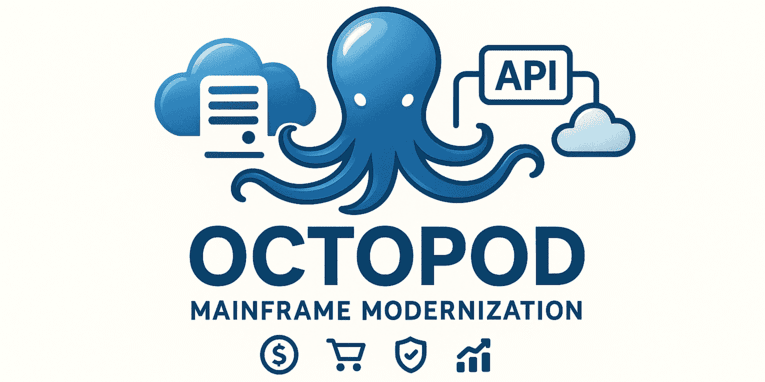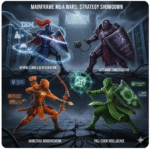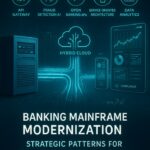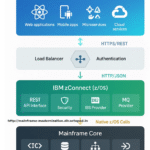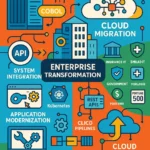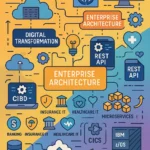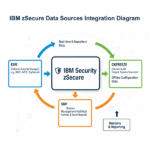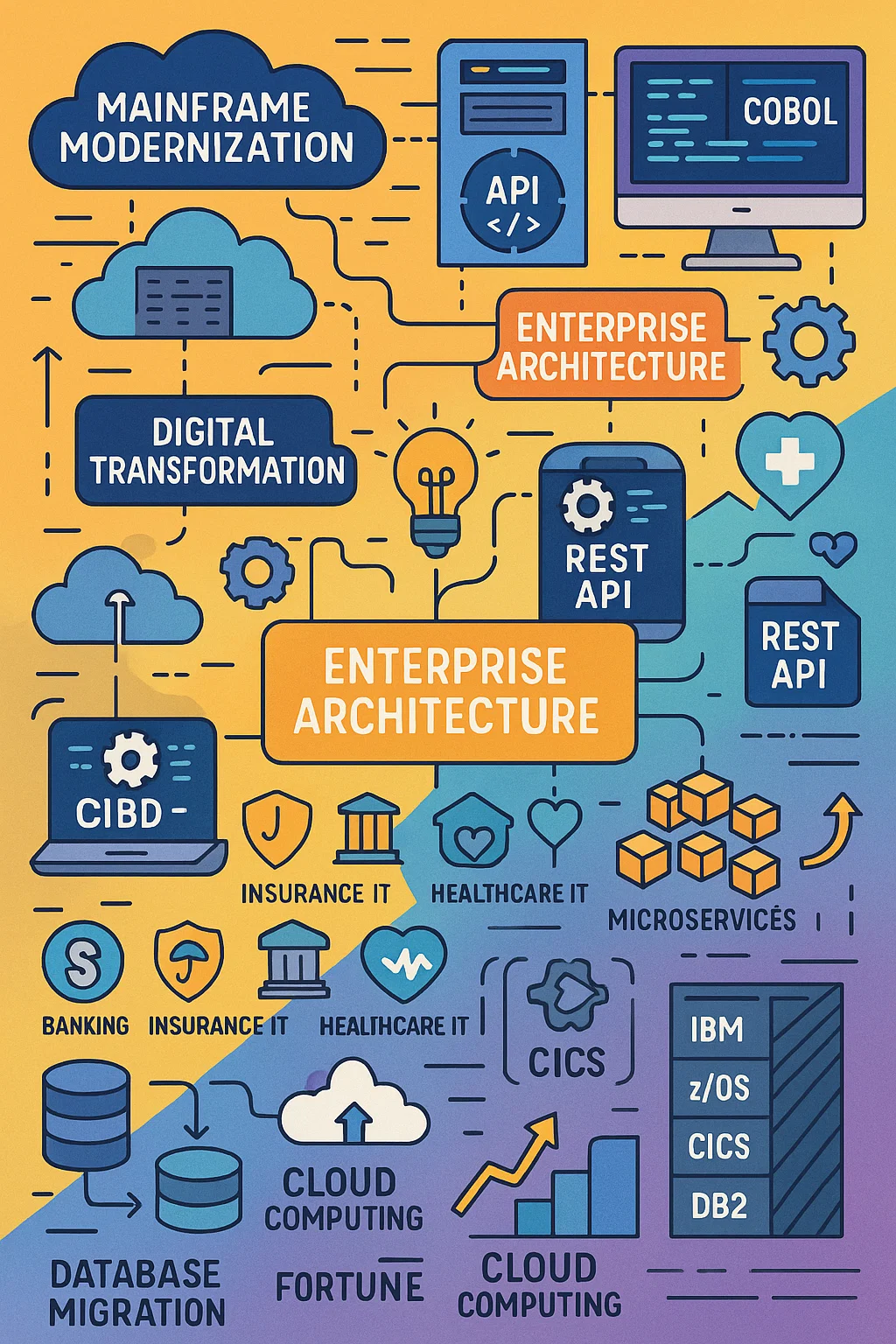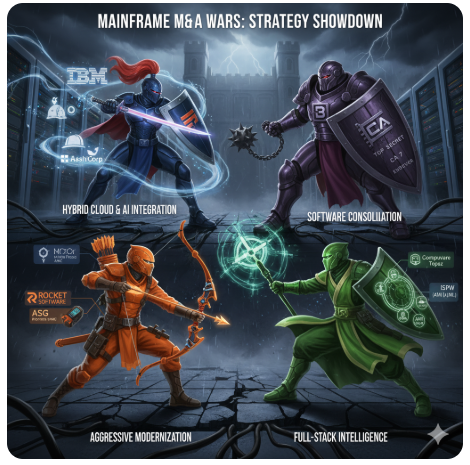Executive Summary
Let’s cut through the noise. Modernizing mainframes isn’t about ripping out systems that process Majority of the world’s credit card transactions. That would be insane.
The market’s growing from $8.39 billion to $13.34 billion by 2030 because companies finally figured out the right approach: hybrid strategies that keep what works and modernize what doesn’t. Wells Fargo, CSX, and Deutsche Telekom are seeing 50-70% cost reductions and 3-5x faster development cycles using this approach.
Most guides talk about the “7 Rs” framework. I’m going to show you the eighth strategy nobody discusses—and it’s the one that actually works.
Why This Still Matters
Here are the facts: mainframes handle 87% of credit card transactions and safeguard 80% of enterprise data. These aren’t dinosaurs waiting for extinction. They’re battle-tested platforms that earned their place through decades of flawless performance.
The question isn’t “should we get rid of mainframes?” It’s “how do we evolve them strategically while adding modern capabilities where they actually matter?”
The Eight Strategies (Yes, Eight)
Everyone knows the traditional seven approaches. But there’s an eighth that vendors won’t talk about because it doesn’t fit their sales pitch.
1. Replatforming: Moving Without Breaking
Think of this as renovating your infrastructure while keeping the same floor plan. You’re moving applications to new platforms—usually cloud—without touching core logic.
When it works: Your COBOL code represents 30 years of business rules. The logic is solid; the infrastructure costs are killing you.
Timeline: 6-12 months if you stay disciplined. Projects that try to “improve things” during the move? 18 months minimum.
2. Refactoring: Internal Improvements
You’re making the code better under the hood—faster, more maintainable, more scalable—but users see no difference.
Why it works: Insurance companies love this because their business logic took four decades to perfect. Every rule exists because someone learned something expensive. You don’t mess with that.
Timeline: 12-24 months. Not fast, but safe.
Critical rule: Don’t let developers “improve” business logic during refactoring. That’s how you end up recalculating premiums wrong and explaining yourself to regulators.
3. Rehosting: Lift and Shift
Don’t change a single line of code. Just move it to a new environment.
The appeal: Speed. Six to twelve months for a complete migration. Every MIPS costs up to $4,000 annually, so when you’re processing millions of transactions, the savings are immediate.
When it makes sense: Your CFO is questioning costs NOW. This buys you time to develop a longer-term strategy.
The limitation: It’s the same code, just cheaper to run. But sometimes immediate savings is exactly what you need.
4. Rearchitecting: Complete Transformation
Breaking monolithic applications into microservices. Building cloud-native from the ground up. This is the full rebuild.
Reality check: 24-48 months. Not cheap. You need real board commitment because ROI won’t appear immediately.
Who needs it: Banks building entirely new digital platforms with multi-year transformation budgets.
Who should avoid it: Anyone with a CFO demanding quarterly returns. This is long-term transformation, not quick wins.
5. Replacing: Starting Fresh
Sometimes you need to build something completely new because the business changed so fundamentally that old systems can’t keep up.
The truth: Expensive and risky. But when your business model shifted entirely, it might be your only option.
Before you commit: Make absolutely sure you can’t modernize existing systems. Replacement always costs more and takes longer than anyone estimates.
6. Retiring: Cutting Dead Weight
Does anyone actually use this application anymore? What happens if we turn it off?
The surprise: Most companies find 20-30% of their portfolio can be retired. That’s immediate budget relief you can redirect to productive initiatives.
How to do it right: Don’t just flip the switch. Check for dependencies. Migrate critical data. Document everything. Companies that skip this discover six months later that one critical month-end report depended on that “unused” system.
7. Retaining: The Strategic “Do Nothing”
Here’s what nobody admits: sometimes the right strategy is doing nothing. Keep systems exactly as they are.
When it makes sense: Your transaction processing runs flawlessly—fast, reliable, zero downtime. Why would you disrupt that?
Modern approach: Keep the core engine, but integrate it with modern technologies through APIs. Let it do what it does brilliantly while you build modern experiences on top.
Real example: A payments company tried migrating core processing three times. Three failures. The fourth time? They kept the core and built APIs around it. Smartest decision they made.
8. Intelligent Hybrid: The Strategy That Actually Works
Here’s what nobody discusses in vendor presentations but everyone actually implements in successful projects.
Smart companies don’t pick one strategy. They use different approaches for different applications based on what each system actually requires. It’s not ideology. It’s pragmatism.
How it works in practice:
- Retain transaction engines that process millions of transactions flawlessly
- Rehost batch processing to cut costs immediately—easy CFO win
- Refactor customer-facing apps to deliver modern experiences
- Replace reporting systems that can’t meet current BI requirements
- Retire unused applications discovered during assessment
- Rearchitect specific services into microservices where business agility demands it
Real-World Success Stories
Wells Fargo’s Cards 2.0 Initiative
They didn’t attempt complete replacement. They built an operational data store using MongoDB that works alongside their existing systems.
Results? The ODS handles 40% of vendor traffic, processes 7+ million transactions with sub-second response, manages 20 terabytes daily, and supports 80+ microservices for rewards programs. Meanwhile, the core keeps crushing transaction processing.
Ram Vemana, Executive of Credit Cards & Merchant Data, confirmed this hybrid approach enabled transformation without risking proven processes.
CSX Railroad
Modernized their operations platform by migrating to MongoDB Atlas on Azure. Maintained 24/7 availability during the transition. Completed the entire migration in hours using Cluster-to-Cluster Sync technology. Not months. Hours.
Deutsche Telekom
Transformed customer channels through hybrid approaches. Daily interactions increased from under 50,000 to 1.5 million. The modernized platform handles 15 times what legacy systems could support.
See the pattern? None attempted complete replacement. They strategically implemented hybrid approaches around existing infrastructure.
Why Hybrid Wins
Risk management: You’re not betting everything on one massive migration. Each component moves independently.
Political capital: Finance sees cost reduction from phase one while IT executes phase two. The board approves continued investment.
Skills transition: Your experts share knowledge while learning new technologies. Cloud developers learn to respect existing capabilities. Everyone grows instead of resisting.
Cost optimization: Move commodity workloads to cheap cloud infrastructure. Keep what performs brilliantly where it is. This isn’t religion. It’s math.
Flexibility: Business changes? Adjust your strategy. You’re not locked into decisions made three years ago when you didn’t understand current challenges.
What Success Looks Like
Intellect Design’s Transformation
The fintech company used MongoDB’s Application Modernization Platform with generative AI. Achieved 85% reduction in onboarding workflow times. Clients access portfolio insights dramatically faster.
Common Patterns Across Successful Companies:
- Nobody attempted complete replacement
- Identified specific bottlenecks and addressed those
- Kept proven transaction processing in place
- Used modern platforms for new capabilities and improved experiences
- Moved incrementally, validating each phase
- Leveraged modern tools instead of manual transformation
ROI Numbers Companies Achieve:
- 50-90% reduction in annual operating costs
- 9-11% profitability increase
- Development cycles 3-5x faster
- Better talent retention (developers want modern tech)
- Improved security and compliance
- Customers notice better performance
The 2025 Technology Landscape
AI-Powered Tools
AWS BluAge for COBOL migration, IBM Watson Code Assistant, Google Cloud Mainframe Assessment Tool—using generative AI for code analysis, documentation generation, and automated conversion. These actually work now.
Data Replication
Real-time integration from Precisely and IBM enables continuous synchronization to cloud platforms. Modern applications access fresh data without expensive query processing.
Testing and Validation
Google Cloud Dual Run captures production workload and replays against modernized apps, ensuring correctness before cutover. Way less risky than hoping it works.
Automated Documentation
AI generates comprehensive documentation from legacy code in hours instead of weeks of manual analysis.
Assessment Tools
Automated portfolio analysis recommending approaches based on actual application characteristics, dependencies, and business value.
Your Action Plan
Step 1: Comprehensive Assessment
Use automated analysis tools. Understand your current estate. What exists? What does it do? Where are dependencies? What costs most? What matters most for operations?
Portfolio assessment isn’t exciting. Do it anyway. You can’t make smart decisions without complete understanding.
Step 2: Strategic Prioritization
Not everything needs immediate attention. Find systems that cost substantial resources but are relatively straightforward to migrate. Build wins. Get momentum. Get budget for harder phases.
Step 3: Implement Hybrid Strategy
Map each application to the appropriate approach based on what it actually requires, not ideology. Different applications need different strategies—that’s intelligent hybrid modernization.
Step 4: Start Small
Pick non-critical applications. Execute pilots. Learn from what goes wrong. Refine your approach. Then tackle bigger challenges. Don’t lead with your most critical systems.
Step 5: Invest in Skills
Train existing staff on modern integration technologies. Hire specialists for complex phases. Build internal expertise so you’re not perpetually dependent on consultants.
Step 6: Measure Everything
Track costs, performance, user satisfaction, feature velocity. Make decisions based on data, not whoever sounds most confident in meetings.
Why 2025 Is Different
AI changed the economics: Generative AI tools can accomplish in months what used to take years. The risk profile changed. The cost structure changed dramatically.
Costs are escalating: Vendors raising prices as the customer base shrinks. Meanwhile, cloud costs keep declining. At some point, the math becomes obvious.
Competition is intensifying: Digital-native competitors ship features weekly. If you’re stuck in quarterly release cycles because infrastructure can’t handle faster changes, you’re losing market share.
The playbook is proven: The patterns exist. Tools work reliably. Other companies executed successful migrations following proven approaches. You’re not a pioneer anymore. You’re following paths that work.
Market momentum: The market hitting $13.34 billion by 2030 means tools matured, partners have experience, risk is manageable. That wasn’t true five years ago.
Conclusion
This isn’t about declaring victory over old technology. It’s about being smart with proven assets while positioning for what’s next.
Companies winning are being selective in their approaches. They’re keeping reliability for core transactions. They’re adding cloud agility for innovation. They’re using AI to accelerate transformation that used to take forever.
Your systems represent decades of proven performance and accumulated business knowledge. The intelligent hybrid approach respects that legacy while strategically adding modern capabilities where they deliver real value.
You’re not choosing between old and new. You’re getting both through smart integration.
The eighth approach—intelligent hybrid modernization—provides your roadmap. Companies like Wells Fargo, CSX, and Deutsche Telekom are achieving measurable results. Tools are mature. Patterns are proven. Economics make sense.
The question isn’t if you’re starting. It’s when
